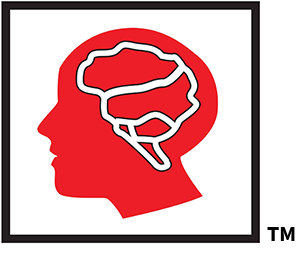When someone asks, “What does psychiatric disorder mean?” I think about all the worried families and friends who just want simple answers. A psychiatric disorder is any condition that affects the way a person thinks, feels, or acts—like anxiety, depression, or bipolar disorder. It’s not some rare, distant thing; it’s all around us (which is hard to believe, I know). Mental health touches so many folks—your neighbor, your cousin, even someone in your house.
Here’s why I care, and why you should too: almost one in five adults struggles with a mental health issue every year. That’s not a small group—that’s millions of real people. Understanding what a psychiatric disorder means (in plain language) makes it much easier to spot signs, offer support, and talk openly at the dinner table. You don’t have to be a doctor or an expert—just knowing the basics is a big help for the people you love most.
Defining Psychiatric Disorders

So, what does psychiatric disorder mean in plain, everyday language? It’s a real medical condition—just like diabetes or asthma—that changes the way someone thinks, feels, or behaves. No, it’s not just “having a rough day” or feeling worried before a big test. The World Health Organization (WHO) and the DSM-5 (Diagnostic and Statistical Manual of Mental Disorders, Fifth Edition) are the main playbooks doctors use to figure these things out. If you hear someone use words like “diagnosis” or “criteria,” they’re usually talking about these guidebooks.
A psychiatric disorder is all about patterns—not just a one-time bad mood, but lasting changes that get in the way of everyday life. And while everyone deals with ups and downs, psychiatric disorders don’t just pass when the weekend comes around. Let’s break it down.
Core Features of Psychiatric Disorders
When I talk about what makes a condition a psychiatric disorder, I picture a checklist in my head. Here are the big things the experts look for:
- Changes in thinking, emotions, or behavior: It could be sad feelings that won’t go away, jittery nerves that never settle, or beliefs that seem out of touch with reality.
- Pattern and persistence: These aren’t just “off” days. The symptoms stick around for weeks, months, or longer.
- Significant impact on daily life: It’s not just stress—you might see trouble at work, school, or home. Hobbies aren’t fun anymore. Relationships may get rocky.
- Not just a reaction to a one-time event: There’s usually no obvious cause, or the reaction is much bigger than you’d expect.
- Described by the DSM-5: Doctors use this manual to match up the symptoms before saying “yes, this is anxiety” or “that looks like depression.”
So, if you ever find yourself wondering, what does psychiatric disorder mean?, just remember: it’s about patterns that keep someone from living their usual, happy life.
Distinguishing Psychiatric Disorders from Everyday Stress
Life is busy. Bills come in, jobs get tough, people argue, and sometimes you just need a good cry. That’s totally normal! But when does it cross that line into something more serious?
Here’s how you can usually tell the difference:
- Everyday stress:
- Feelings come and go.
- Usually tied to a specific situation (like a deadline or an argument).
- Once the stressor goes away, so do the feelings.
- You can still enjoy things and take care of yourself.
- Psychiatric disorder:
- The struggle doesn’t fade, even when things seem okay around you.
- The changes in mood, sleep, appetite, or energy stick around for weeks or longer.
- Regular tasks—like getting out of bed, going to work, or chatting with friends—feel impossible.
- Life feels gray, heavy, or out of control, no matter what’s going on.
Think of it like the difference between a rainy day and a flood. Rain might mess up your plans, but a flood turns your whole world upside down. Everyday stress is part of being human. But if it starts to feel like the floodwaters never go down, it’s time to get a checkup—no shame in that.
Remember, asking what does psychiatric disorder mean isn’t just for doctors. It’s for anyone who wants to help families, friends, or even themselves spot the signs and reach out for support.
Categories and Examples of Psychiatric Disorders

Now that we’ve unpacked “what does psychiatric disorder mean,” let’s break down the main groups you’re likely to hear about. Psychiatric disorders come in all shapes and sizes—just like people. Some focus on mood, some affect how we see the world, and others touch on how we connect with others. I promise, these categories aren’t as confusing as they sound. With a little help, you can start to recognize the patterns that set each type apart. Below, I’ll walk you through the big ones and share real-life examples you may have heard about (or even spotted in your circle).
Mood and Anxiety Disorders
Mood and anxiety disorders are probably the ones folks talk about most often. They’re the “heavyweights” when it comes to mental health conversations—and for good reason. If you’re asking yourself, what does psychiatric disorder mean, chances are you’re thinking of something from this group.
Here are a few of the most common:
- Depression (Major Depressive Disorder): This isn’t just feeling sad after a tough week. Depression sticks around, drains your energy, and makes even simple tasks feel impossible. You might notice friends pulling away, sleeping too much (or too little), and losing interest in the things they once loved. If life starts to feel colorless, that’s a sign.
- Bipolar Disorder: Picture a rollercoaster with wild ups and downs. Some days are sky-high with energy (manic phases); others feel like a never-ending, bleak tunnel (depressive phases). This disorder doesn’t mean someone is “moody”—it’s much bigger and tougher to handle.
- Generalized Anxiety Disorder (GAD): Everyone worries sometimes, but folks with GAD feel the worry all day, every day, even when things are going well. They might pace, fidget, or always expect something bad is just around the corner. It’s exhausting and can make every part of daily life harder.
- Panic Disorder: Imagine panic that strikes out of nowhere—a pounding heart, shaky hands, and a sudden, scary fear that doesn’t make sense. These panic attacks can show up anytime, and people often worry about when the next one will hit.
These disorders are common, stubborn, and often misunderstood. The good news? Spotting the signs early means you can help someone get support faster.
Psychotic, Neurodevelopmental, and Personality Disorders
This mix of disorders might sound a little more “clinical,” but don’t worry—I’ll keep it simple. When people ask, “what does psychiatric disorder mean for these categories?” the main thing to know is that the symptoms can deeply shape how someone experiences the world or gets along with others.
Here are a few standout examples:
- Schizophrenia (Psychotic Disorder): This is where “reality” sometimes feels out of reach. People might hear voices, see things that aren’t there, or believe ideas that don’t line up with real life. It’s confusing for everyone—family, friends, and the person living through it.
- Autism Spectrum Disorder (Neurodevelopmental Disorder): Autism starts in childhood and affects how a person talks, plays, or connects with others. Some folks with autism love routines or get overwhelmed by bright lights and loud sounds. Others find it tough to make eye contact or join in group games. It’s a spectrum—everyone is different.
- Borderline Personality Disorder (Personality Disorder): Folks with BPD can feel emotions intensely and quickly change moods. Relationships may swing from super close to very distant in the blink of an eye. They often feel empty, worry about being abandoned, or act impulsively when upset.
If you hear these terms, just remember—they’re not about someone being “bad” or “difficult.” They’re real medical conditions and deserve care, understanding, and support. And yes, they all count when you’re answering the question, “what does psychiatric disorder mean?”
So, the next time you spot signs like these in someone you care about, you’ll know you’re not alone and that there’s a name (and real help) for what’s happening.
Diagnosing Psychiatric Disorders
So, now that you know what psychiatric disorders are and how they stand out from everyday stress (like when your to-do list is bigger than your laundry pile!), you might wonder—how do doctors figure these things out? Diagnosing a psychiatric disorder isn’t quite like taking your temperature or checking your blood pressure. Mental health professionals use a mix of checklists, careful listening, and good old-fashioned people skills to figure out what’s really going on. There’s a system to it, yes, but also a warm, human side—the kind you’d want if you or someone you love needed help.
Diagnostic Manuals and Criteria: The Rules of the Road
Alright, pop quiz: When you hear someone talk about “criteria,” what comes to mind? (Okay, you don’t need to answer out loud.) In the world of mental health, the criteria are the rules doctors follow for making a diagnosis. They don’t just pull ideas out of thin air! Two main guidebooks set the standards:
- DSM-5 (Diagnostic and Statistical Manual of Mental Disorders, Fifth Edition): This is the “gold standard” for mental health professionals in the United States. It’s like the recipe book that doctors use to match up symptoms with specific conditions. Each disorder in the DSM-5 has a list of signs and symptoms. If someone has enough of these for a set time, doctors can confidently say, “Yes, this matches what’s in the book.”
- ICD (International Classification of Diseases): Used all over the world (and by insurance companies), the ICD is like a giant library of health conditions—mental and physical. Its mental health section works a lot like the DSM-5. If you’re ever in another country and hear talk of “ICD codes,” that’s what they mean.
Why all the formality? It’s simple: using the same standards means people get the same care, no matter where they live. It’s about being fair and clear, not confusing or wishy-washy. That way, when you ask “what does psychiatric disorder mean,” there’s a real answer—one that everyone can agree on.
Assessment Methods and Professional Evaluation: More Than a Check-Box Test
Okay, so you know the rulebooks are there. But doctors aren’t just robots checking boxes (thank goodness!). They get to know you—the whole you. Professional evaluation is part heart, part science, and always personal.
Here’s what’s usually included in a diagnosis:
- Clinical Interviews: Ever been to the doctor and felt like you were just a number? Not here. A mental health professional talks with you—really talks. They ask about your feelings, thoughts, sleep, energy, stress, and even your worries and dreams. It’s a conversation, not an interrogation. And if you have trouble talking (maybe you’re anxious or shy), a good clinician helps you feel at ease.
- Psychological Testing: Sometimes, doctors use written tests or computer quizzes. These aren’t like school exams (no need to study!). They help measure things like memory, attention, or how you see yourself. They can shine a light on problems that aren’t obvious just through conversation.
- Behavioral Observation: Sometimes, what you say is only part of the story. A trained eye can spot patterns, like someone who laughs nervously, avoids eye contact, or seems restless. Observation fills in the gaps when words come up short.
- Talking to Family (if you give permission): Loved ones can offer clues you might not notice in yourself. Maybe your mom notices you’re snappier than usual, or a partner sees you’re skipping meals. It’s not about blame—it’s about painting the fullest, most honest picture.
Let’s put it all together: a diagnosis means matching what’s real in your life (the “story”) to the rulebooks (the “criteria”), using honest conversation and careful observation along the way. It’s thorough, but never cold. It’s all about understanding you better, so you get the right help.
When someone wonders “what does psychiatric disorder mean,” I always say: it means taking the time to listen, ask, and look for patterns—not just in a day, but over time. That’s how doctors spot real issues, not just passing moods. And trust me, when a family works with a caring professional, it’s like finding a compass in a storm. You don’t have to figure it out alone!
Impacts and Stigma Associated with Psychiatric Disorders

When you think about “what does psychiatric disorder mean,” it’s not just about labels and lists. It’s about what happens next—to people, families, and even whole communities. The effects ripple outward, sometimes in surprising ways. From little daily routines to big milestones like graduations and weddings, mental health can change the whole picture. And right alongside the symptoms, there’s something a lot trickier to talk about—a heavy weight called stigma. I’ll break down what all of this means for real people, because, honestly, these stories might sound familiar in your own life.
Consequences for Individuals and Families
It’s hard to wrap up all the ways a psychiatric disorder can touch someone’s life, but here’s the heart of it: nothing stays simple. When you’re the person struggling, you might feel like you’re spinning your wheels. Even basic tasks—like making breakfast or keeping plans—can feel like climbing a mountain. Emotions swing, thoughts get tangled, and everyday wins can slip right out of reach.
Here’s where the impact often shows up:
- Relationships get strained. Friends sometimes pull away because they don’t get what’s going on. Couples might fight more, and families can start walking on eggshells, afraid to “say the wrong thing.”
- Work and school get tougher. Missing a few days here and there? That’s common. But with a psychiatric disorder, it’s not just a “day off,” it’s extra hard to focus, finish projects, or even show up. Jobs can slip away, grades can drop, and the stress grows.
- Daily life changes. Hobbies? You might not feel like doing them anymore. Errands and chores can stack up until they feel unfixable. Routines mix up—or disappear.
- Health can take a hit. Sleep gets weird, appetites shift (either nothing sounds good or everything does), and aches or pains often stick around. The mind and body are partners—when one feels off, so does the other.
I’ve seen whole families circle the wagons to support a loved one, only to find themselves running on empty. Sometimes you get “caregiver burnout,” or siblings feeling left out, or parents stuck asking, “What happened to our happy routines?” That’s a tough place to be. If you see your own story in these lines, just know you’re not alone and there are ways to move forward—one tiny win at a time.
Overcoming Stigma and Promoting Mental Health Awareness
Now, let’s talk about stigma—the big, messy shadow that follows many psychiatric disorders. It’s everywhere: at school, at work, at the grocery store, even in our own heads. Some folks hear “psychiatric disorder” and picture dangerous or unreliable people. Others think it means someone is “broken” or just not trying hard enough. These myths make everything harder.
But here’s the truth that I wish everyone knew: Mental health is as real as a broken arm or a fever. We would never whisper about someone in a cast—so why the hush-hush attitudes around depression or anxiety?
Because stigma can be stubborn, here are a few ways I love to chip away at it:
- Talk openly and kindly. Start real, unfiltered conversations about mental health at home or with friends. That’s how the walls come down.
- Share true stories. If someone you trust opens up about their experience, listen and cheer them on. Nothing makes a person feel braver than a little support.
- Learn the facts—then teach others. Understanding what does psychiatric disorder mean (for real, not just what you see on TV) helps bust through stereotypes.
- Stand up to stigma. If you hear mean jokes or lazy comments, speak up if you can. Even a gentle “That’s not funny” helps.
- Reach out for help, without shame. Therapy, counseling, or just a good old heart-to-heart with someone you love can make a world of difference.
Every time we shine a light on the truth, it gets a little less scary to ask for help. You don’t have to be a superhero to make a difference—you just have to care. So if you catch yourself wondering, “What does psychiatric disorder mean for me or my family?” remember: it means you deserve support, dignity, and hope, just like anyone else.
Treatment and Support for Psychiatric Disorders
When someone asks, “what does psychiatric disorder mean,” it’s natural to wonder what comes next—how do people actually get better? If you’re anything like me, you want real stories, not just a list of mysterious treatments. The honest truth is, while there’s no magic button, real help is out there, and you don’t have to go through it alone. The whole idea is to feel better, have hope, and find the right support that fits with real, everyday life.
Let’s talk about how treatment works, the many tools in the mental health toolbox, and why you really do need your people—family, friends, and maybe a few trusted pros.
Therapeutic Interventions and Medications
It’s no secret—reaching out for help is huge. The right combination of therapy and medication can open doors that once felt locked tight. Just like you wouldn’t expect your car to drive with a flat tire, these treatments help get things rolling again.
Therapy (sometimes called counseling) is like having a trusted guide on windy roads. You sit and talk—yes, really talk!—with a trained therapist who listens with zero judgment. There isn’t just one kind of therapy, but here are the big ones people use:
- Cognitive Behavioral Therapy (CBT): It’s a favorite among therapists. You learn to spot tricky thoughts and practice new habits. Suddenly, big problems feel manageable.
- Talk Therapy: For some, it’s just about saying things out loud that you’ve been holding in. Even this simple step can bring real relief.
- Family or Group Therapy: Sometimes, it’s not just the person with the diagnosis. Families come together, learn how to handle tough moments, and cheer each other on.
On the flip side, medication—like antidepressants or mood stabilizers—can be a solid tool. These are real medical treatments, and for many people, they’re just as important as insulin for diabetes. Here’s what you should know:
- Medications can take a while to kick in, and sometimes you try a few before you find the right fit.
- Doctors help track side effects and make sure the medicine is helping—not hurting.
- For some, medicine is a long-term partner. For others, it’s just a short-term boost.
The biggest thing? There’s no shame in needing help. If a pill or a talk makes life better, it’s worth it. These aren’t just “band-aid” solutions. They’re steps toward the life you want.
Lifestyle Adjustments and Support Systems

Here’s something I’ve noticed: the small stuff really does matter. What does psychiatric disorder mean day-to-day? It means learning, growing, and sometimes calling for backup. That’s where lifestyle changes and support make a difference.
Changing daily habits might sound simple, but it can be powerful. Take sleep, for example. Getting enough rest is like giving your brain a nightly reset. Healthy meals—yes, even quick sandwiches or apples—keep the mind steady. Making time for walks, music, or stretching does wonders.
Let’s break down some changes that help:
- Keep a steady routine: Meals, bedtime, and chores at regular times. Routines offer comfort and cut down on brain clutter.
- Move your body: Even gentle movement lifts mood and burns off stress. No marathon required.
- Cut back on bad habits: Too much caffeine, late-night scrolling, or skipped meals can sneak in when life gets busy. A few small tweaks can help.
- Find enjoyable hobbies: Drawing, gardening, or playing games—these light up different parts of your brain and make days brighter.
And here’s my not-so-secret tip: you can’t do it all yourself! Real support matters—a lot. Here’s what helps keep you steady:
- Family and friends: Even a simple “How are you?” call makes a tough week easier.
- Community groups: Faith groups, clubs, online forums, or neighborhood meetups offer real support and shared wisdom.
- Peer support: Sometimes, talking to someone who knows what you’re feeling (because they’ve been there) helps break the loneliness.
If you’re still asking yourself “what does psychiatric disorder mean” after reading to this point, remember—it means support, love, patience, and real tools for healing are out there. When people pull together, it’s like the difference between trying to paddle a leaky boat all alone or having a whole team rowing right beside you. That’s the best kind of hope I know!
Conclusion
Understanding what does psychiatric disorder mean opens doors for support, kindness, and better days together. When we see these disorders as real medical conditions—just like a broken leg or high blood pressure—it takes away some of the fear and guesswork. It also helps us spot when someone needs help and gives us the right words to use at the dinner table or during a late-night chat.
Remember, “psychiatric disorder” is not some far-off idea. It touches families, friends, and neighbors—sometimes more quietly than we realize. If you or someone you care about feels stuck or lost, reaching out is the brave first step. Trust me, those small, caring acts and open talks can be the start of healing and hope.
Thanks for reading and caring. Share this with someone who might find it helpful, or leave a comment below if you have thoughts or questions. You’re never alone, and there’s always a way forward.
